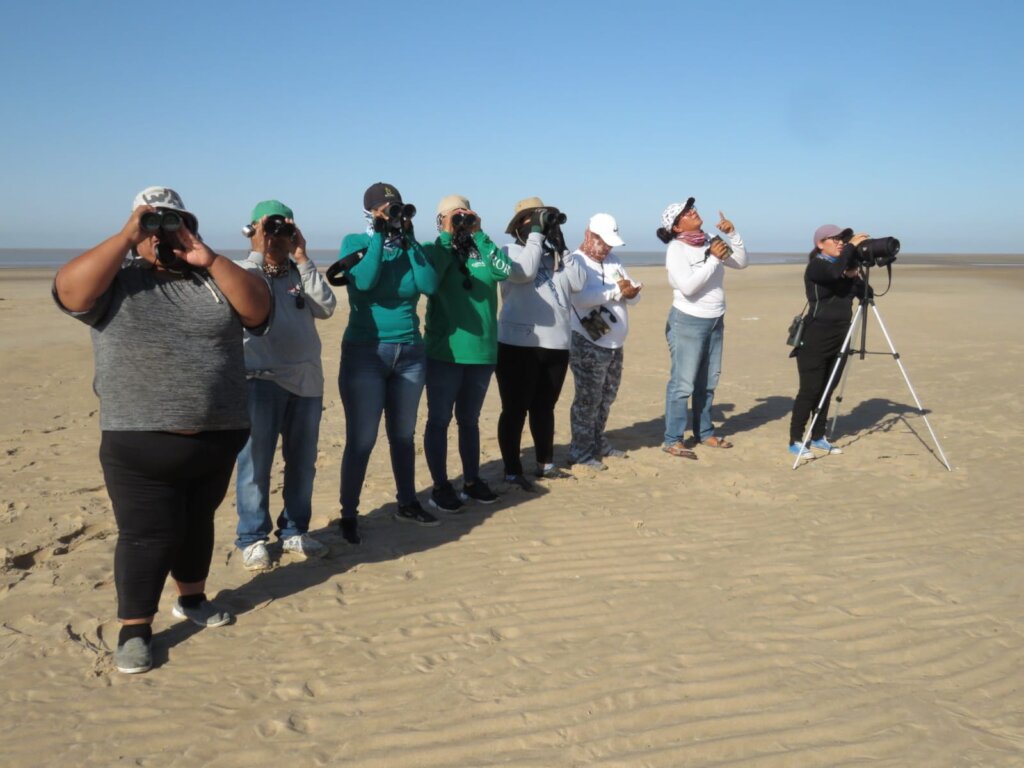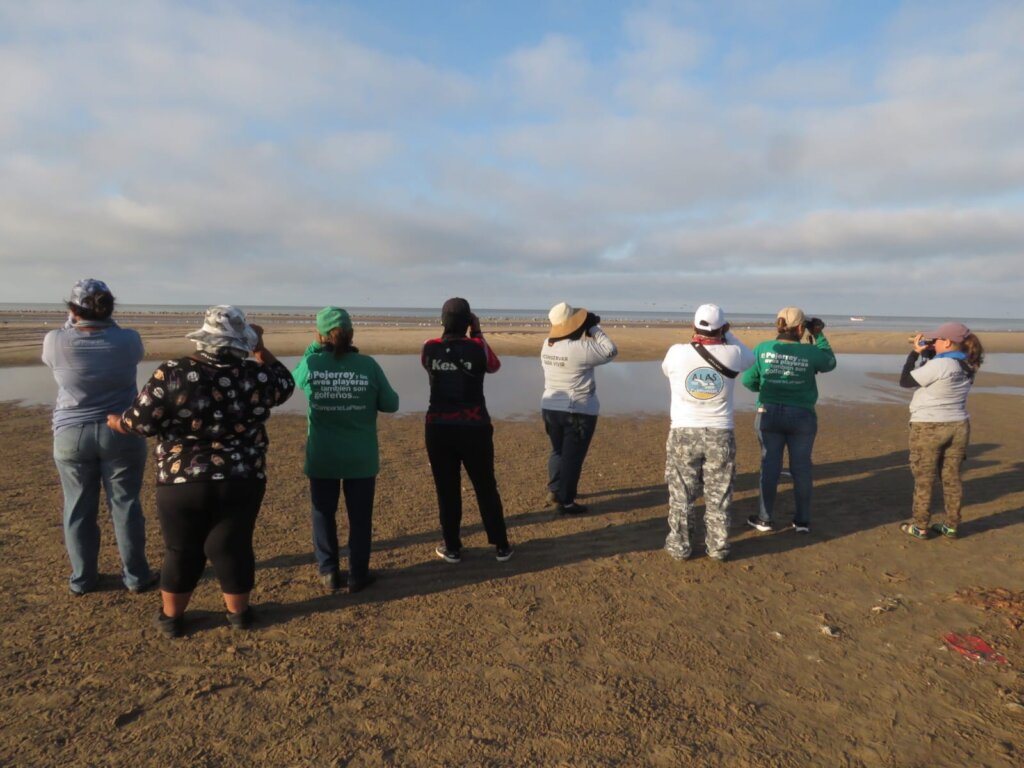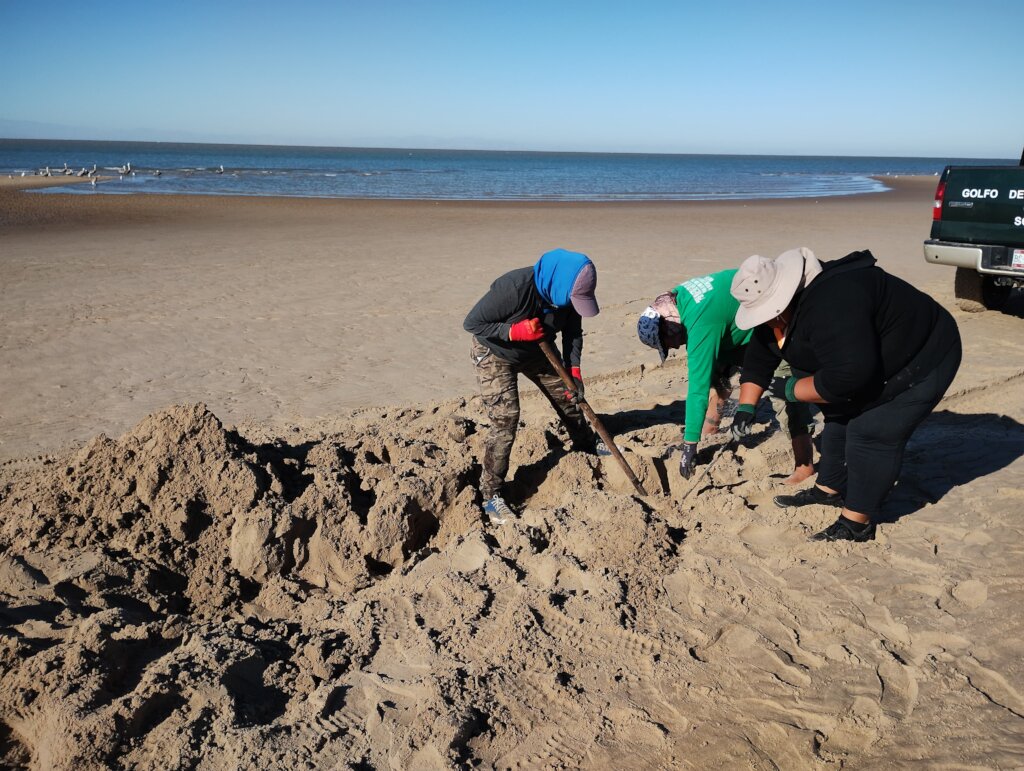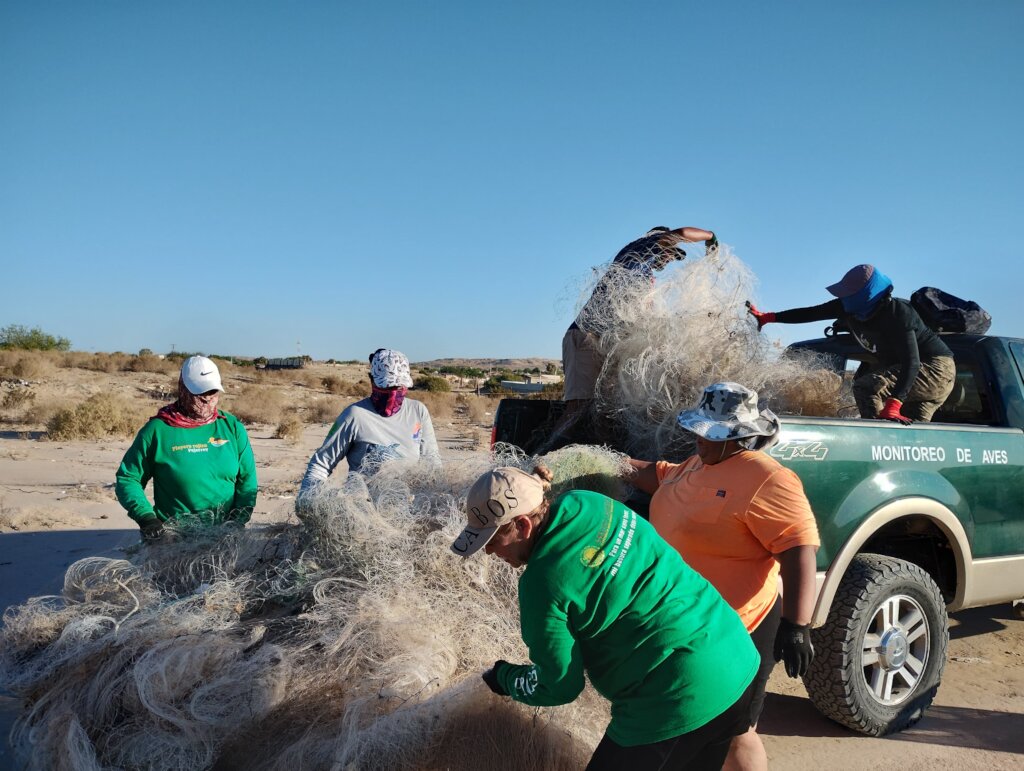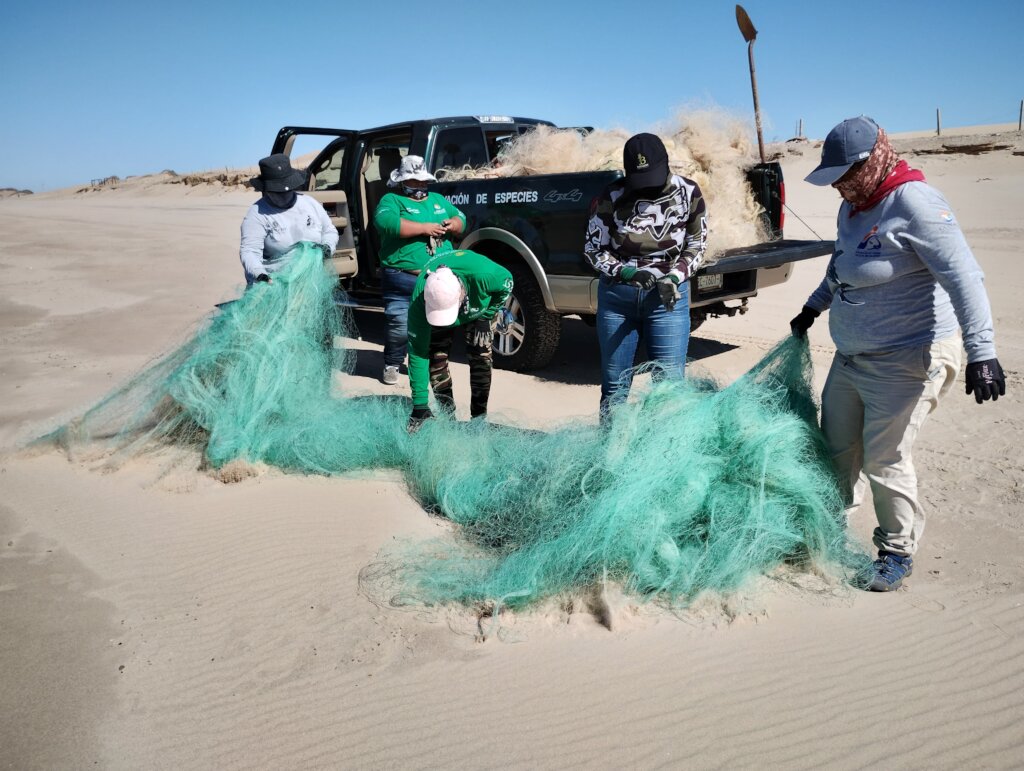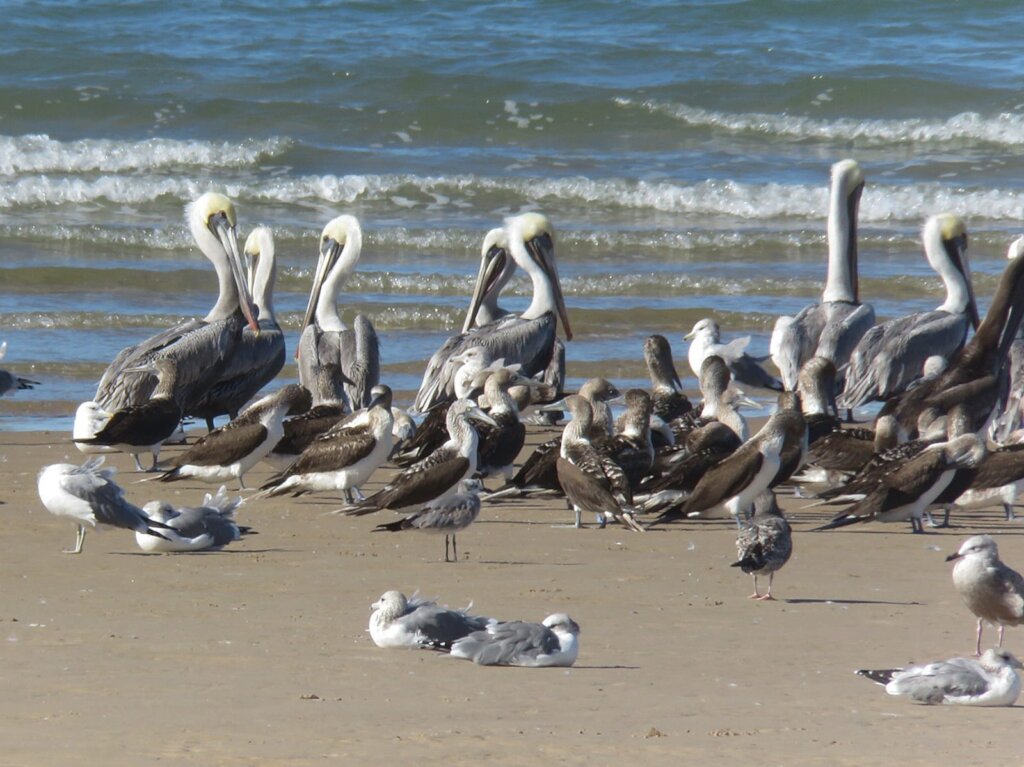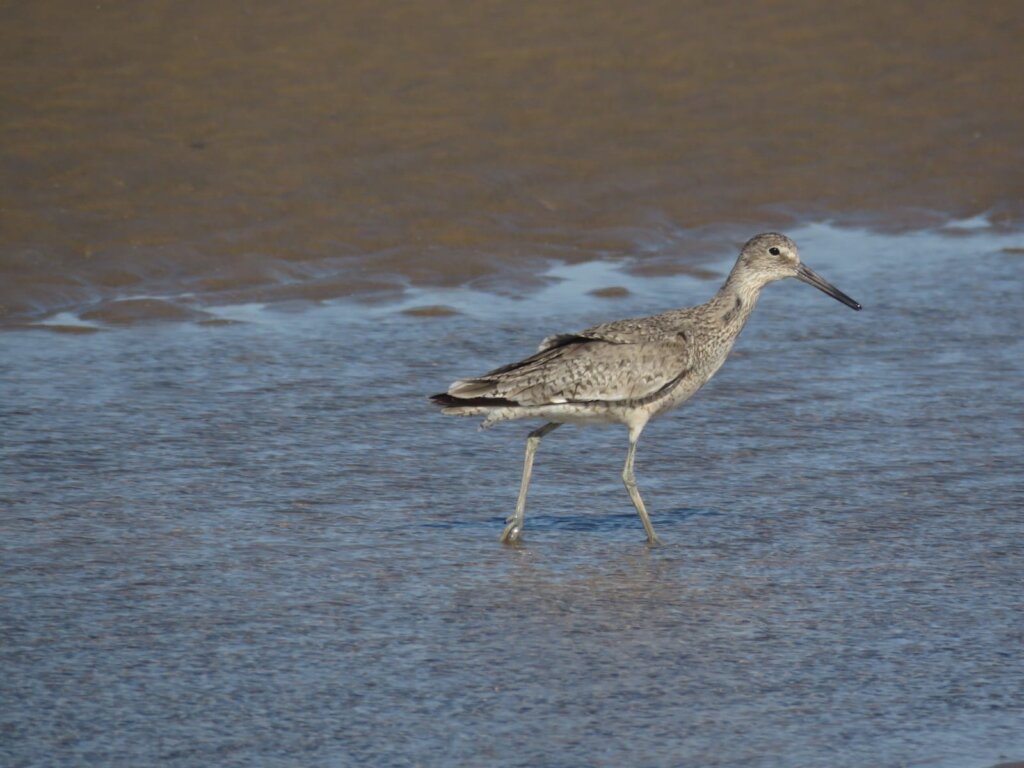By Adriana Hernandez Alvarez | Project Leader
Wow, another three months have flown by!
During this time, we’ve been hard at work monitoring the distribution and abundance of waterbirds along the beaches of the Upper Gulf of California and the Colorado River Delta Biosphere Reserve. We are collaborating with CONANP (National Commission of Natural Protected Areas) on the Protection and Restoration of Priority Species and Ecosystems Program (PROREST).
These efforts have been incredibly enriching for our team. We honed our skills in identifying waterbirds and expanded our knowledge beyond the species we initially focused on. Now, we can confidently recognize birds such as the Ruddy Turnstone, Black Turnstone, Killdeer, and Least Sandpiper. Our progress extends to differentiating several gull species, including the Yellow-footed Gull, Ring-billed Gull, American Herring, California Gull, Laughing Gull, Franklin's Gull, Bonaparte's Gull, and even the Lesser Black-backed Gull and the Western Gull. Land birds, too, have captured our attention, such as the American Pipit, Western Meadowlark, and the Tree, Barn, and Cliff Swallow.
Equally memorable are the places we’ve visited for sampling. Despite being relatively close to town—no more than 40 kilometers away—many of us had never explored these beautiful, historically significant areas. Each site offers a glimpse into the unique charm of our region, reminding us why this work matters so deeply.
In addition to monitoring waterbirds, one of our core PROREST tasks is ecosystem restoration. This includes removing abandoned or lost fishing nets—commonly known as "ghost nets"— a serious threat to beach inhabitants. Removing these nets is painstaking work; usually, the visible portion on the surface is just a fraction of the whole net. The buried sections require a great deal of digging to uncover, it's a significant effort to extract them completely.
Yet this work is crucial. We’ve seen firsthand the damage ghost nets cause, with fish and birds trapped in them. Whenever we find entangled wildlife, we immediately set them free. So far, we’ve rescued species such as the Yellow-footed Gull, Great Blue Heron, Eared Grebe, and Western Grebe.
To share what we do, we regularly post updates about our daily activities on social media. We hope to inspire others in our community to take action, no matter how small. You can follow our journey and learn more about our environment on Facebook, Instagram, and iNaturalist under “Cuidando al Playero rojizo y al Pejerrey”.
Finally, we want to extend a heartfelt thank you. Your support fuels our mission and allows us to protect this beautiful ecosystem and its inhabitants. We invite you to continue supporting our efforts through GlobalGiving. Every contribution helps us make a difference. Thank you for believing in our work—see you on the beach!
Project reports on GlobalGiving are posted directly to globalgiving.org by Project Leaders as they are completed, generally every 3-4 months. To protect the integrity of these documents, GlobalGiving does not alter them; therefore you may find some language or formatting issues.
If you donate to this project or have donated to this project, you can receive an email when this project posts a report. You can also subscribe for reports without donating.
Support this important cause by creating a personalized fundraising page.
Start a Fundraiser